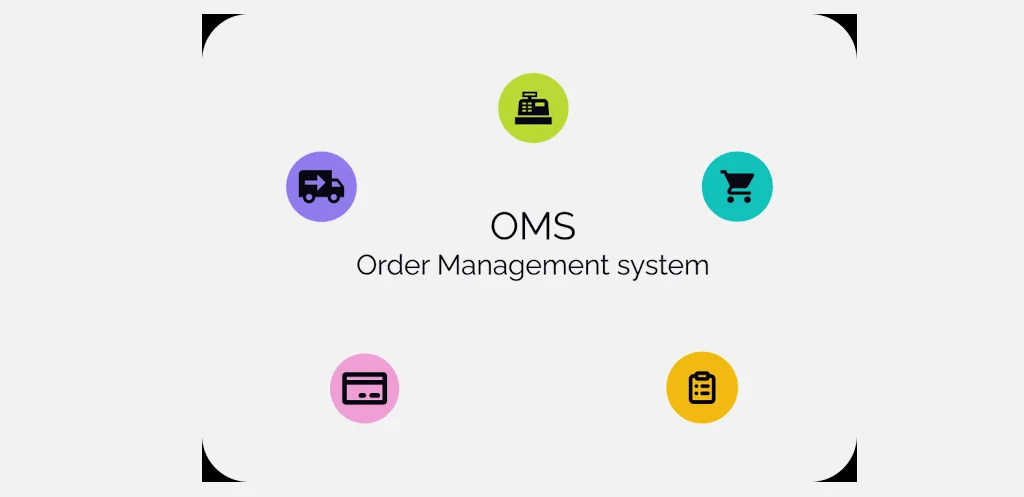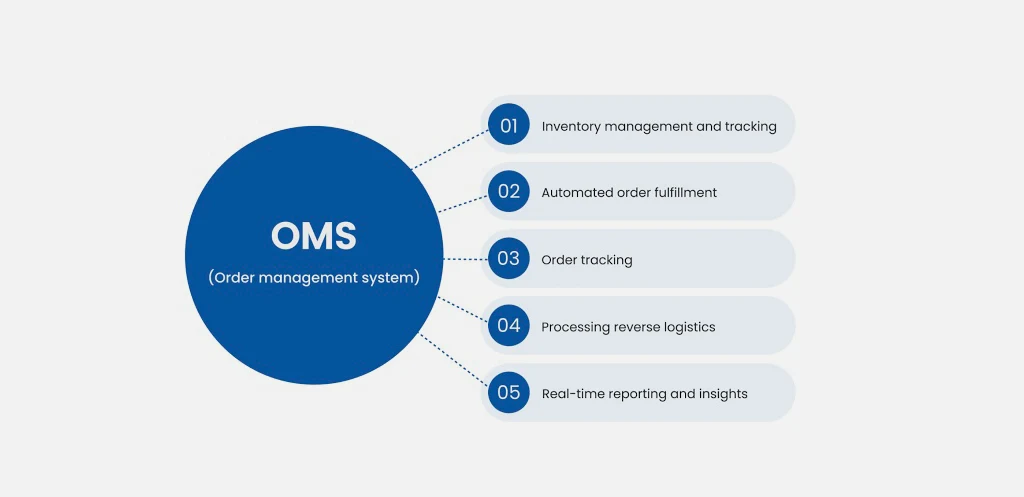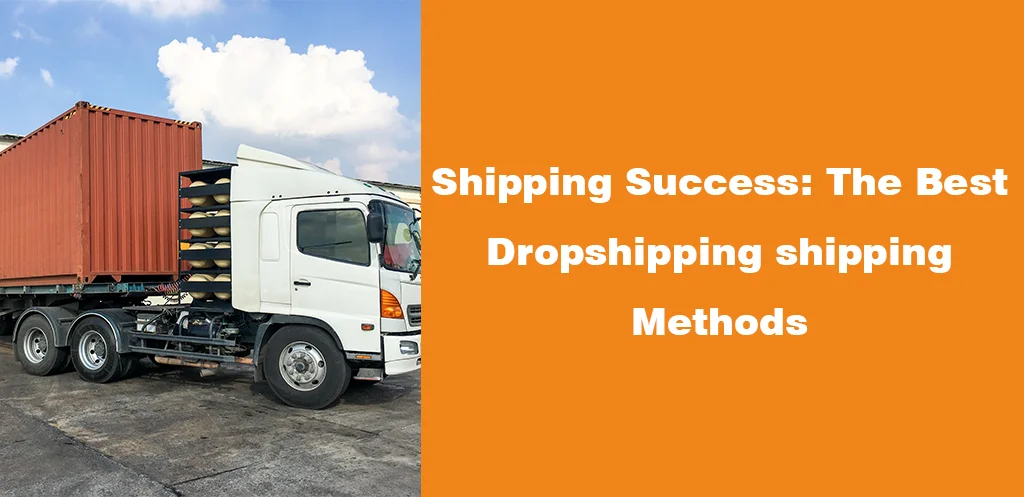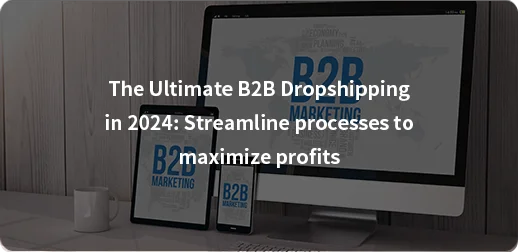As an e-commerce business owner, you’ve probably struggled with managing orders efficiently while striving to boost sales. A disorganized order management system can lead to delayed deliveries, incorrect order fulfillment, and dissatisfied customers.
My journey through the e-commerce landscape has taught me that managing orders is about building an ecosystem that proficiently handles everything from stocking your inventory to warehouse operations, fulfillment, shipping, and managing returns.
A well applied OMS can differentiate between a satisfied customer and a lost opportunity. It’s about reducing errors from sale to delivery and enhancing the overall customer experience, turning first-time buyers into loyal customers.
In the following sections, we’ll delve deeper into what makes an OMS not just functional but exceptional, and how this can be your secret weapon in the competitive e-commerce arena.
What Is Order Management?

When we talk about Order Management, we’re really diving into the core of how your business handles every single order. Order Management is all about smoothly orchestrating everything related to your orders for products or services. It’s the important step that manages the full lifecycle of an order, from when a customer places it to when it lands in their hands.
This process is about seamlessly accepting and fulfilling customer orders, keeping a vigilant eye on each step, and meticulously managing all the data tied to it.
The ultimate aim here is to craft a system that not only works efficiently behind the scenes but also delivers a flawless and streamlined experience to your customers. After all, a happy customer is a repeat customer, and in e-commerce, that’s what we’re all striving for.
Key Components of Order Management

Order Management System (OMS)
An OMS is the technological backbone that automates and streamlines order processing. It manages inventory levels, customer databases, returns, billing, and payment information, ensuring accuracy and efficiency.
Order Lifecycle
The journey of an order starts with its placement and continues until delivery and beyond. This lifecycle includes order processing, inventory checks, fulfillment, and after-sales services. Each phase is integral to customer satisfaction.
For example, Sarah orders running shoes online. The order management system checks inventory, confirms availability, and processes her order. The shoes are picked, packed, and shipped, with Sarah receiving regular updates. She easily arranges a return upon finding a defect, highlighting efficient after-sales service and customer satisfaction.
Inventory Management
Effective inventory management is at the heart of a seamless order process. An OMS offers real-time tracking of sales and inventory levels, allowing for timely restocking and minimizing stockouts.
Let’s take a small online bookstore, for example. When a customer orders a popular novel, the OMS automatically updates the inventory count. This real-time tracking shows that only two copies are now left in stock. Given the book’s popularity, the OMS alerts the store manager to reorder more copies.
This timely notification helps the bookstore restock before running out, preventing stockouts and ensuring continuous availability for future customers.
Fulfillment
This phase involves the physical processing of orders, including picking, packing, and shipping. It requires coordination between various systems, like warehouse management and customer relationship management, and often involves collaboration with third-party logistics.
Globallyfulfill’s expertise in this area is well documented in our insightful article, 7 Steps of the Order Fulfillment Process, a must-read for e-commerce sellers aiming for efficiency.
Customer Support
Effective customer support in order management is about creating a smooth, efficient process for handling returns and refunds, which are inevitable in e-commerce.
An OMS plays a pivotal role here. It integrates various customer interaction points, providing a unified view of customer orders.
This integration means that when a customer, like Sarah in our previous example, contacts support about a return or refund, the support team can immediately access all relevant information about her order.
How Does Order Management Work?

Let’s break down how order management typically works for you. It starts when a customer places an order, which could be through an automated system like an OMS. You then accept and record this order, preparing it for fulfillment.
The real action happens in the warehouse, where your team picks, packs, and ships the order. Tracking is key to keeping you and your customer updated throughout this process. And after the delivery, remember, your interaction with the customer isn’t over.
Globallyfulfill specializes in optimizing order fulfillment, from inventory management to customer support. Their services include e-commerce fulfillment and dropshipping agents, ensuring a smooth process for our clients.
Here’s a breakdown of how the order management process typically works:
Receiving the Order
The process begins when a customer places an order. This can be done manually or through an automated Order Management System (OMS) system. The OMS captures all relevant order details, marking the beginning of the order management cycle.
Accepting the Order
When an order lands in your system, it is promptly recorded and communicated to the warehouse or store. This phase is crucial because you must ensure that everything is set for a smooth journey through the fulfillment process.
Picking, Packing, and Shipping
This stage is where workers expertly select the right products, carefully pack them, and prepare them for their journey to the customer. Warehouse software must talk seamlessly to customer relationship management (CRM) and enterprise resource planning (ERP) systems.
And let’s not forget the crucial partnerships with third-party logistics and shipping partners. These collaborations are key to ensuring every package leaves the warehouse on time and reaches its destination as promised.
Tracking the Order
Once the order is on its way, it enters the tracking phase. Here, both you and the customer can follow its journey. The system provides regular updates on the delivery status, offering peace of mind with real-time information about where the order is and when it’s expected to arrive. This transparency is vital, as it builds trust and keeps the customer informed every step of the way.
After-sales Processes
The relationship with your customer doesn’t end at delivery. Post-delivery processes are where you cement customer loyalty. This involves reaching out for feedback, efficiently handling returns or refunds, and ensuring customers are satisfied with their purchases. This stage is critical for building strong customer relationships and enhancing the quality of your service.
It’s important to note that delivery times are a significant factor for online shoppers. For instance, 38% will abandon their order if delivery takes longer than a week, and nearly a quarter will do so if no delivery date is provided.
Moreover, 69% are less likely to shop with a retailer again if a purchase is not delivered within two days of the promised date. Additionally, unexpected shipping costs and excessive fees are significant factors in order abandonment and cancellation.

Key Challenges of Order Management
Now, let’s talk about your challenges with order management. Handling orders from different sales channels, maintaining visibility, and managing data can be tricky.
Visibility Problems of Orders
A significant issue is the need for more visibility of orders throughout the order fulfillment process. For small and medium-sized enterprises (SMEs), this lack of visibility can result in delays and customer dissatisfaction, as tracking and locating orders at various stages becomes challenging.
Data Gaps and Inconsistencies
Data management also poses a challenge. The need to handle order operations across multiple channels can lead to data gaps and inconsistencies, affecting the overall order management process. This issue is crucial, as it impacts not only order processing but also inventory management and customer service.
Insufficient Order Management Systems
Additionally, the features of Order Management Systems (OMS) can sometimes be inadequate or redundant, further complicating the order management process. The systems may have only some necessary features for efficient order processing or unnecessary features that clutter the process.
To optimize order management, businesses are advised to implement an Order Management System (OMS) to streamline order processing, improve visibility, and enhance the overall customer experience.
Difficulties with Bulk Orders
You must also ensure your OMS has the right features and can handle complex orders like bulk or multi-package shipments. Understanding these challenges is the first step to optimizing your order management.
A 2022 survey identified top fulfillment challenges, including delivery expectations, transportation capacity, labor shortages, warehouse space constraints, and technology limitations.
Labor shortages, for instance, impacted 77% of respondents’ order processing times, delivery delays, and customer service. Companies are raising wages, using temporary workers, and implementing automation and robotics to address these.
How to Optimize Order Management?
So, how can you optimize order management for your e-commerce business?
System Integration
Integrating all your e-commerce systems ensures seamless operations across the board. This integration connects inventory management, customer relations, and other components, reducing errors and enhancing efficiency.
Enhancing Customer Visibility
Keeping customers informed about their order status boosts satisfaction and builds trust. Real-time updates reduce the need for customer service inquiries.
Speeding Up Delivery

And let’s not forget about the shipping times. Delivery times can make or break customer satisfaction. Focusing on efficient warehouse management and leveraging data for strategic decision-making can significantly improve delivery times.
Warehouse Management Review
Optimizing your warehouse operations can reduce fulfillment errors and enhance order accuracy. This might include reevaluating storage practices or integrating advanced warehouse management systems.
Data Utilization
Utilizing data analytics helps identify bottlenecks and areas for improvement, enabling a more streamlined and effective order management process.
Implementing a robust OMS can streamline your processes, improving the overall experience for both you and your customers. An OMS streamlines order processing, improves visibility across the entire order lifecycle, and enhances the overall customer experience.
To further enhance order management systems, considering services like Globallyfulfill’s Quality Control can be pivotal in ensuring order accuracy and customer satisfaction.
Conclusion
Mastering order management is pivotal in the e-commerce landscape. By adopting an integrated and robust OMS, you’re not just streamlining operations; you’re elevating the entire customer experience.
Every step, from receiving an order to the post-delivery service, builds lasting customer relationships and drives your business toward success.

















This is my first time pay a quick visit at here and i am really happy to read everthing at one place